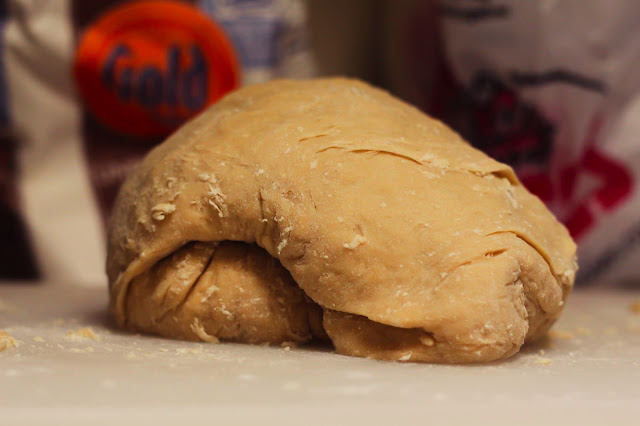How can you have tomato soup without a cheesy bread to sop it up?
This week in the Country Roads Test Kitchen, I revived the roasted tomato soup recipe from Il Posto Cafe in uptown New Orleans. Find the recipe here.
The soup, with its tremendous depth of flavor, needed an ideal dipping companion. I chose focaccia because it's easy and quick to make, and I love the freedom to spread my desired toppings over the dough before baking--like fancy pizza!
I adapted the pesto focaccia recipe from Whisks and Whimsy (which I hope has a meandering sister blog out there known as "Whisky and Whims.") Shamefully, I did not make my own pesto, because my food processor is broken right now. But my abashed, hanging head was rewarded with the lovely scent of roasting tomatoes. So instead of "Sorry I'm not sorry," I guess it's "I'm not sorry I'm sorry!" If that makes sense...
Back to the recipe! Once my dough was properly combined in my stand mixer (with the dough hook attachment), I left it to proof in the oven while I ran to the store for everything else. Perfect timing. All I had to do when I came back was roll out the dough, top it with pesto, onions, and fresh mozzarella, and throw it (or ya know, carefully set it down while wearing oven mitts and squinting at the heat waves) in the oven for 25 minutes.
While the bread cooled slightly, I finished my tomato soup. Then sliced the bread. Then dipped. Then sighed. Happy eating!
Pesto and Mozzarella Focaccia
Makes one large pan.
2 teaspoons rapid-rise dry yeast
1 cup water, warmed to about 115 degrees
2 tablespoons sugar
3 1/2 to 4 cups all-purpose flour
1 tablespoon kosher salt dissolved in 2 tablespoons water
1/4 cup extra-virgin olive oil, plus more for brushing
1/4 cup prepared pesto
4 oz. fresh mozzarella (pearls or torn into 1/2-inch pieces)
1/2 yellow onion, halved and thinly sliced
1. In the bowl of your standing mixer, combine the yeast, water and sugar. Stir to dissolve, and let sit for 3 minutes, until foamy. With the mixer fitted with a dough hook, turn the mixer on low speed and slowly add 3 1/2 cups of flour to the yeast mixture. Add the dissolved salt (doesn’t have to be completely dissolved) and slowly pour in the olive oil. When the dough starts to come together, increase the speed to medium and mix for about 8-10 minutes, until dough is smooth and elastic. Add the remaining flour a tablespoon at a time if the dough is too sticky.
2. Turn the dough out onto a clean counter and knead a few times before forming the dough into a round ball. Place the dough ball into a large oiled bowl, turning it so that it is coated with olive oil. Leave the dough ball in the bowl and cover with plastic wrap. Let rise in a warm place for about 45 minutes, until the dough has doubled in size.
3. Preheat oven to 400 degrees and coat a sheet pan with olive oil. Turn out the dough on your work surface. Roll and stretch the dough roughly into a rectangular shape (doesn’t have t be perfect); the dough should be about a 1/2 inch thick. Transfer the dough to the oiled sheet pan, cover with plastic wrap, and let sit for 15 minutes.
4. Uncover the dough and use your fingertips to make dimples in the dough. Brush the dough with extra-virgin olive oil and then brush the dough lightly with the prepared pesto and top with fresh mozzarella and onion slices. Bake the bread in the lower third of the oven for 15 to 20 minutes, until the top is golden.



















































